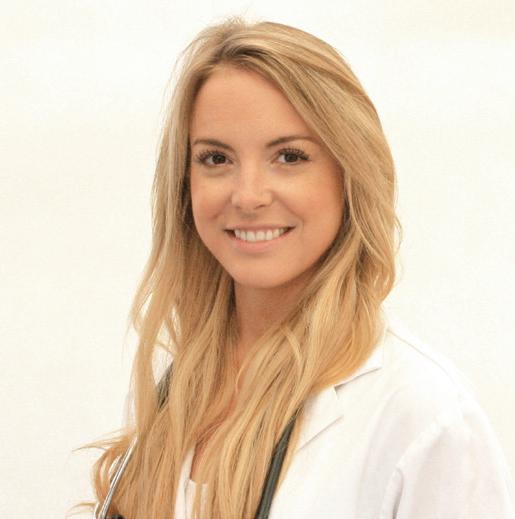EXPERT
s r e Answ
with Dr. Jen
Q Dear Dr. Jen,
I like being outdoors in the summer—and I take good care to slather on the sunscreen—but I am curious about how to ensure I’m getting enough vitamin D. —H.M., Kelowna
Being too sun safe could lead to a deficiency in vitamin D. Consider exposing your unprotected arms or legs for a short amount of time to get this very important vitamin!
A
As the summer days heat up, it is important to protect yourself when spending more time outside. But unless you are supplementing, being too safe could lead to a deficiency in vitamin D. Vitamin D is more than a vitamin—it is a hormone involved in bone health, immune function, skin health, and mood, especially in those with vitamin D deficiency. In our neck of the woods, vitamin D deficiency is fairly common; even in lower latitudes like south Florida, vitamin D deficiency occurs in up to 40% of the adult population. Interestingly, the prevalence of vitamin D insufficiency in young, healthy people is on the rise, and it is believed to be due to the excessive use of sunscreens. In the summer months when the UV index is higher, brief exposure to sunlight (for about a quarter of the time it takes to cause light pinkness in your skin) is the best way to get your vitamin D. Sunscreen, sunblock, and clothing will prevent this process; so consider exposing your unprotected arms or legs for a short amount of time to get this very important vitamin! And, because vitamin D is stored in fat, getting more one day could support not getting any on the following day. Just 6 days of casual sunlight exposure without sunscreen can make up for 49 days of no sunlight exposure. But always be careful not to burn yourself and when in doubt, consider supplementing with vitamin D on a daily basis.
Like sunglasses protect our eyes, astaxanthin protects the skin from free radical damage from ultraviolet radiation.
DR. JENNIFER BRIX is a naturopathic doctor, health educator for Natural Factors, and public speaker with a passion for empowering her patients to achieve optimal health. Dr. Jen has special expertise in treating digestive complaints, hormone imbalances, and brain-related health conditions. She has a busy active practice at Brix Wellness Clinic in Kelowna, BC.
25 | July/August 2020
Q Dear Dr. Jen,
Have you heard about taking a supplement to support your skin when spending lots of time in the summer sun? I seem to remember it was a word that was hard to pronounce! —B.L., Surrey
A
I know just the one! What you are referring to is astaxanthin. As-ta-ZAN-thin is an important carotenoid in the same family as beta-carotene. It is a pink-red colour, which is most famously known to colour animals pink, such as fish roe, prawns, shrimp, and salmon, as well as the animals that eat them, like flamingos. But it does more than dye these animals—it acts as a strong antioxidant, offering 6,000 times more antioxidant protection than vitamin C! Astaxanthin has the ability to quench free radical damage from ultraviolet radiation, which is why animals living close to the surface of the water, like shrimp and prawns, or organisms with little defense (like fish roe) need astaxanthin to prevent this oxidation from the sun. It is like a natural sunscreen for these creatures, and this benefit can also be seen in humans. In addition to protecting our skin from sun damage, astaxanthin supports cardiovascular and immune system health, and is also very important in protecting our eyes. And it will not block the ability for UVB light to synthesize vitamin D in your body.








